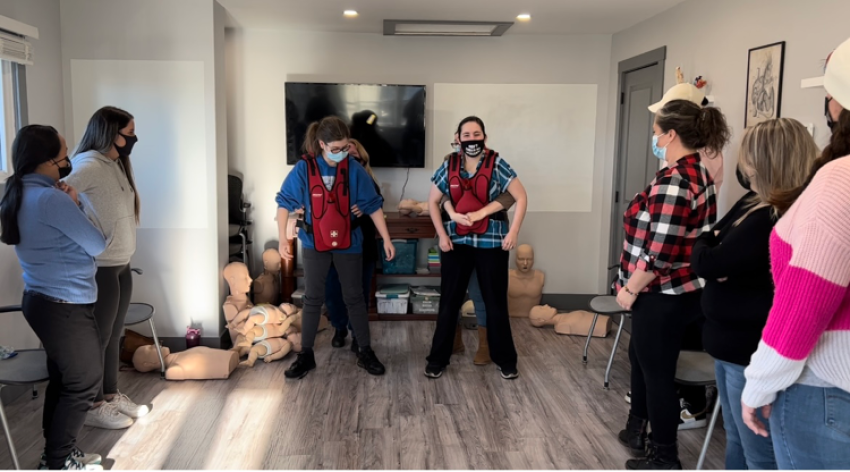Choking and Suffocation: In Infants Under One
Choking and Suffocation is The Leading Cause Of Accidental Infant Death
Did you know that choking and suffocation account for almost 40% of accidental injuries in infants that are under the age of one in Canada? Approximately 95% of deaths from choking happen when you are at home. It is not just infants and young children that have choking emergencies; it can happen to us at any age. We’ve all read the stories about young children or teens who have saved their loved ones from choking situations.
We are a huge advocate for training in the school system. It’s a life skill that everyone can use at any time in their lives. Oftentimes, when people begin to choke, they isolate themselves away from other people. This is the exact opposite of what you want to do.
Infants and adults can have two types of chokes:
A partial choke or obstruction means that there is still oxygen coming in and out of the lungs. People could be coughing, wheezing, speaking or crying. Infants, on occasion, can be making a sound called a strider’s noise. This sound is like high pitch wheezing - this is not enough oxygen to sustain life.
A full choke or total obstruction means no oxygen going to and from the lungs. The universal signs of total obstruction are hands grasping at the throat, discoloration around the lips and bulging panicky eyes.
Finger sweeps are no longer the preferred method unless you can reach in the infant’s mouth with thumb and forefinger to grasp the object and pull it out. In many cases, you could end up making the choke worse by sticking your fingers in an infant’s mouth.
If you don’t know what to do in a choking situation, check out our YouTube channel to learn more.
https://www.youtube.com/channel/UCiscmZTEh5wlY2PVh5kicug
